Marin’s Rift Zone E2 electric mountain bike is impressively capable and fun to ride, with a wide performance range that extends beyond the traditional confines of a 140mm-travel bike.
Its poppy suspension helps hide its weight through the turns or on flow trails, but then maintains chassis stability in rough terrain. If you’re looking for a trail-focused, shorter-travel, full-power electric mountain bike, the Rift Zone E2 is an obvious choice.
Following in the footsteps of the updated Rift Zone trail bike – launched at the end of 2022 – this electrified version features trail-focused geometry, 140mm of travel front and rear and 29in wheels.
As we’ve come to expect from Marin, it’s also relatively affordable (£5,895 / $6,299 / €6,899) for the well-specced top-level E2 model on test here.
This model is specced with Fox’s 36 Performance Elite fork and Float X Performance Elite shock, Shimano’s XT M8130 Linkglide 11-speed drivetrain and EP801 electric bike motor, finished off with SLX M7120 brakes.
However, the short-travel, full-power eMTB trail bike category isn’t well populated, with just a few brands offering models with similar stats to the Rift Zone E.
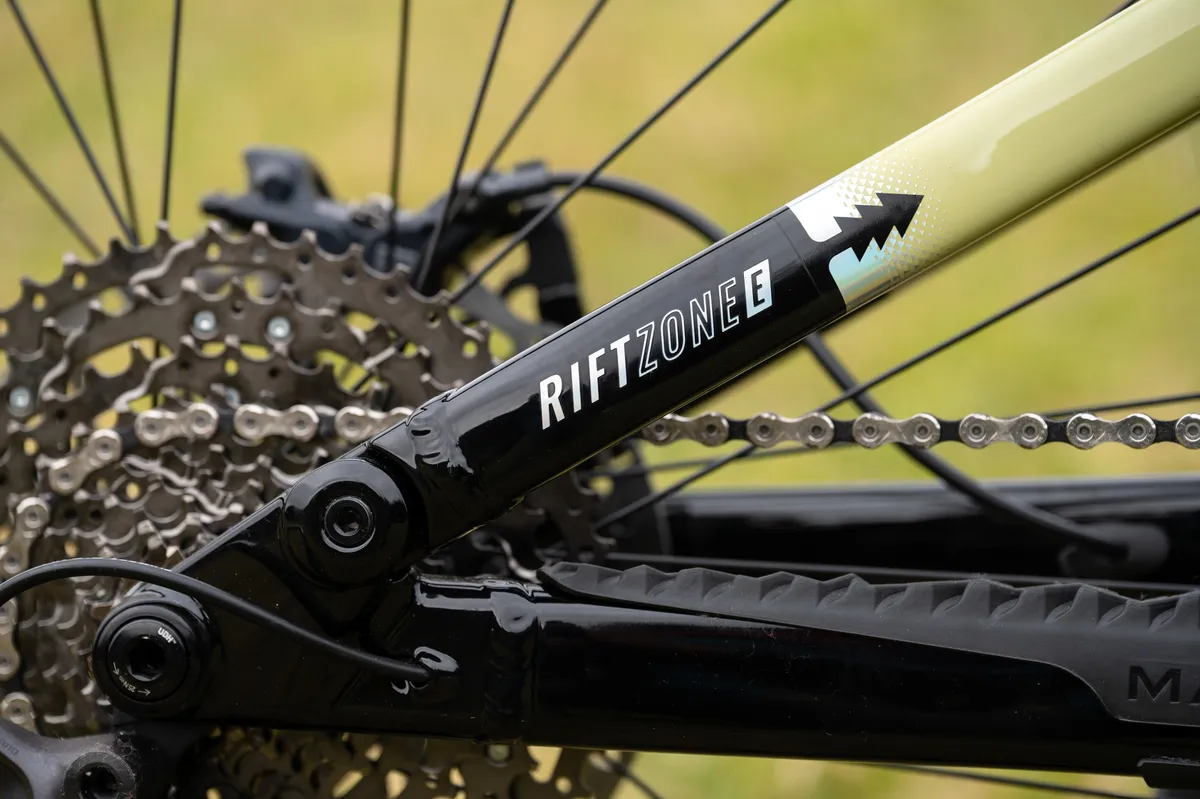
Is consumer appetite driving a lack of choice, or are brands missing a trick by not having a shorter-travel eMTB in their range?
Could the new Marin be the answer to eMTB trail riders’ demands, offering a balance between being over- and under-biked, without the range anxiety and lack of power seen on lightweight electric bikes?
Marin Rift Zone E2 frame, suspension and motor

The bike is manufactured using Marin’s Series 4 hydroformed aluminium tubes. Its seatstays and top tube create a clean, straight line between the front and rear triangles.
It has smooth welds and double- and triple-butted tubes, along with 3D-forged dropouts and rocker links.
Cables are routed internally from front to back via ports on the down tube, rather than through the headset. Bump stops on the underside of the down tube prevent the fork from damaging the tube by turning too far.
Chunky chain-slap protection is fitted to the driveside chainstay, while it uses the SRAM Universal Derailleur Hanger (UDH), making it compatible with SRAM’s Eagle Transmission.

The 140mm of rear-wheel travel is controlled by Marin’s MultiTrac design, which uses a single pivot with a rocker link to drive the rear shock.
Marin says it has tuned the leverage rate to be 24.2 per cent progressive, making it well suited to air and coil shocks, and the extra weight of ebikes.
At 30 per cent sag, it has just under 130 per cent anti-squat. This means pedal bob should be limited, but the suspension will still remain active.
Anti-rise – how much the suspension compresses or extends when braking – starts at 105 per cent and drops to 80 per cent through its range of travel. This should help keep the suspension from extending or compressing when you brake.

The E2 is fitted with Shimano’s newest EP801 motor, which ups maximum power from 500W to 600W, compared to the EP800 motor, but retains the previous generation’s 85Nm of torque.
Other changes include compatibility with Shimano’s all-new XT M8150 Di2 Free Shift and Auto Shift functionality, but this isn’t fitted to the Rift Zone E2.
Shimano’s 630Wh BT-EN806 battery features, but it’s only compatible with the latest generation of EP801 and EP600 motors. Previous-generation batteries (BT-E8036) aren’t compatible with EP801 motors.
The all-new SC-EN600 display features more data fields and 10 per cent battery charge indicator increments. Also new is the switch and on/off button, called the SW-EN600-L.
Marin Rift Zone E2 geometry
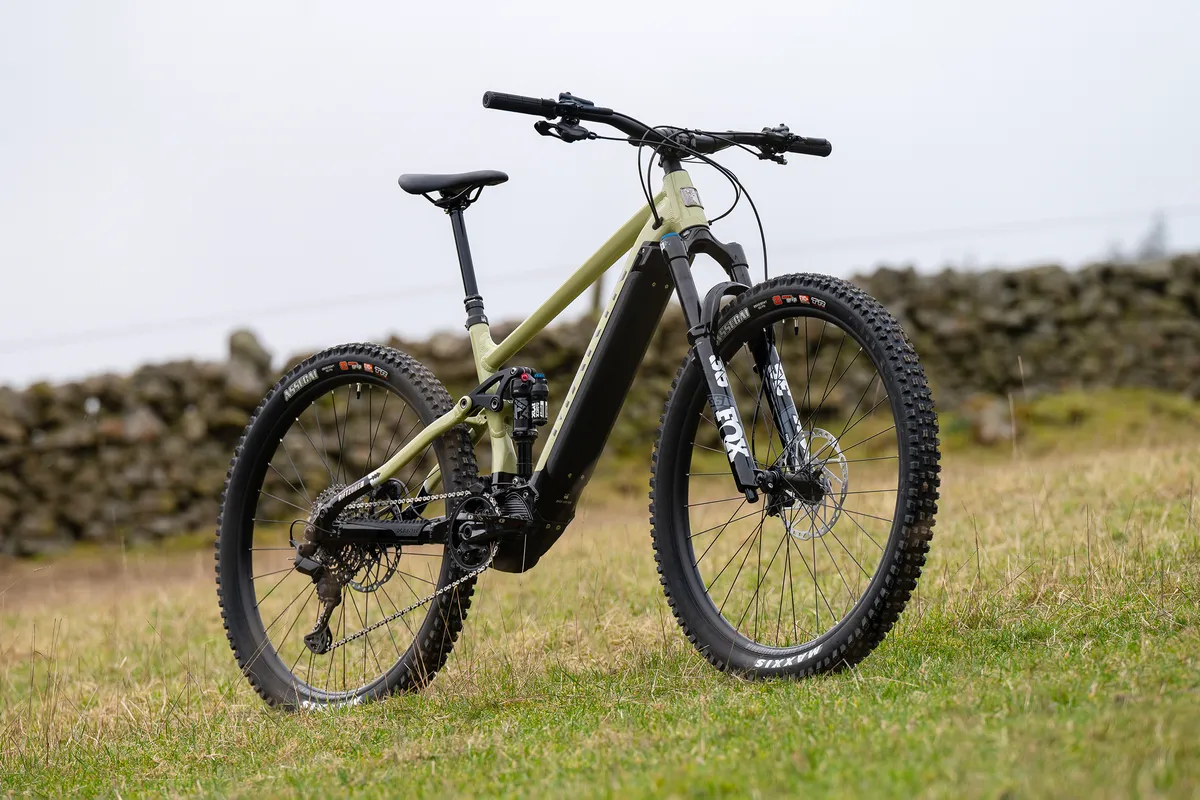
Rift Zone E2’s geometry places it directly in the trail bike category.
It has a modern 65-degree head tube angle and a steep 77-degree seat tube angle.
It’s available in four sizes from small to extra large. Reach figures start at 445mm and rise to 515mm.
| | Small | Medium | Large | Extra-large |
|---|---|---|---|---|
| Stack (mm) | 606.98 | 614.04 | 625.1 | 634.16 |
| Reach (mm) | 445 | 465 | 485 | 515 |
| Head angle (degrees) | 65 | 65 | 65 | 65 |
| Head tube length (mm) | 100 | 110 | 120 | 130 |
| Seat tube angle (degrees) | 77 | 77 | 77 | 77 |
| Seat tube length (mm) | 390 | 400 | 425 | 435 |
| Top tube (mm) | 585.13 | 607.22 | 629.32 | 661.41 |
| Bottom bracket height (mm) | 348.5 | 348.5 | 348.5 | 348.5 |
| Bottom bracket drop (mm) | 32 | 32 | 32 | 32 |
| Chainstay (mm) | 440 | 440 | 440 | 440 |
| Wheelbase (mm) | 1,198.29 | 1,222.52 | 1,246.74 | 1,280.97 |
| Standover (mm) | 693.65 | 696.01 | 709.94 | 719.93 |
The bike's standover heights are low (693.65mm size small to 719.93mm size large), helped by short seat tube lengths that span from 390mm to 435mm. Akin to Specialized's S-Sizing, you won't be restricted by seat tube and standover heights if you wish to size up or down to tune how the Rift Zone E2 handles.
The large test bike has a 485mm reach and a 625mm stack, along with a 1,246.74mm wheelbase.
Each size has 440mm chainstays and a 348.5mm bottom bracket height.
Marin Rift Zone E2 specifications

Topping out the Rift Zone range is the E2, boasting a functional and well thought-out spec list.
Performing damper duties are Fox’s Performance Elite air-sprung 36 fork and Float X rear shock, each offering plenty of adjustment.
Shimano’s XT M8130 11-speed Linkglide drivetrain boasts an 11-50t cassette with “triple the durability of Hyperglide” and runs on a standard HG freehub design. SLX M7120 four-piston brakes take care of stopping.

Marin’s own-brand rims are wrapped in either Vee Tire or Maxxis rubber. This test bike came fitted with MaxxGrip EXO+ Assegais front and rear. The Rift Zone E1 and E2 are fitted with CushCore inserts and come supplied with Marin’s latex-free tubeless sealant as standard.
Continuing the own-brand theme are Marin’s Trail Bar, CNC stem, Grizzly lock-on grip and Marin saddle.
The TranzX dropper post has 170mm of travel and is actuated by a Shimano’s I-Spec mounted lever.
My size-large test bike without pedals weighed 24.23kg.
Marin Rift Zone E2 ride impressions

I tested the Marin Rift Zone E2 on my home trails in Scotland’s Tweed Valley over the course of several gruelling months.
I rode the bike on the famous winding trails at the Glentress trail centre, wild backcountry singletracks across the Scottish Lowlands, and pushed it to its limits on the enduro tracks at the Golfie and downhill runs at Innerleithen.
Setup
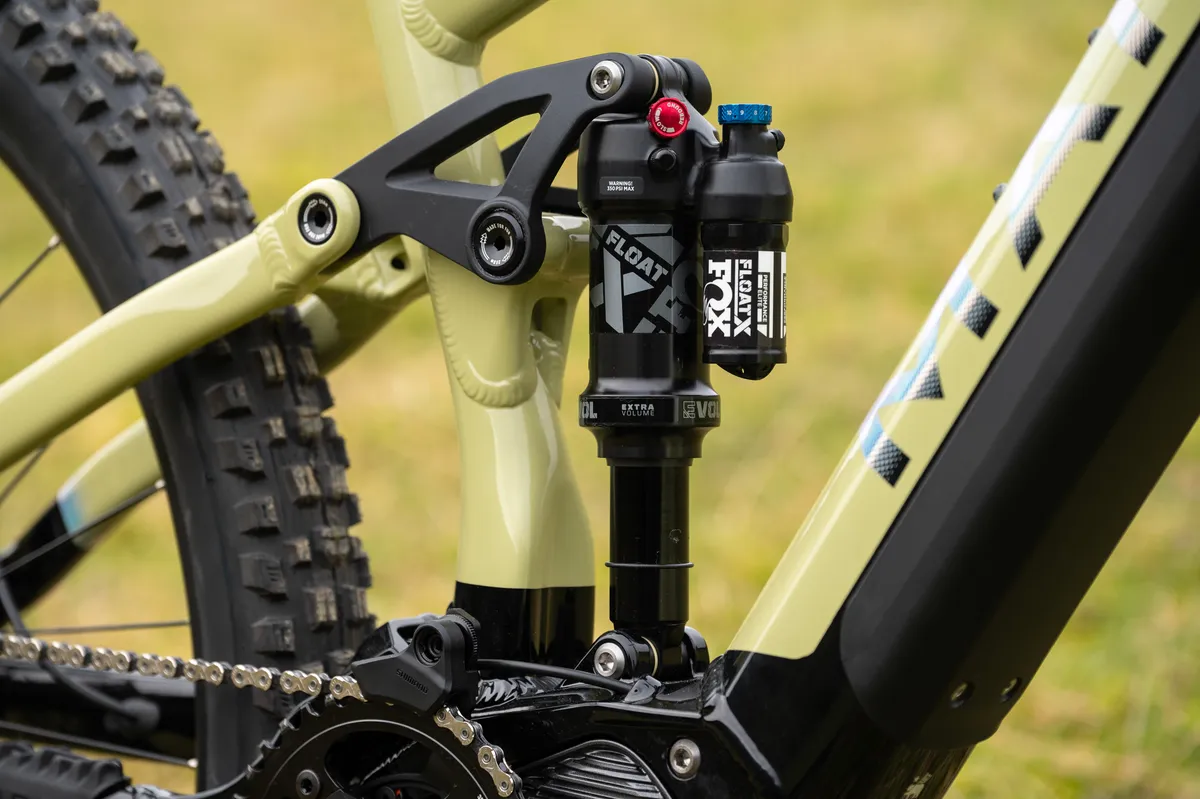
For my 76kg kitted-up weight, I initially set the Fox 36 fork’s spring to 98psi, but increased this to 110psi while testing. I left the four factory-fitted volume-reducer spacers installed. I set all the external rebound and compression adjustments to fully open.
Like the fork, I increased shock pressure from 180psi to 200psi during testing. I left the stock volume-reducer spacer installed. I set the external low-speed rebound and compression adjusters to fully open.
Marin Rift Zone E2 climbing performance
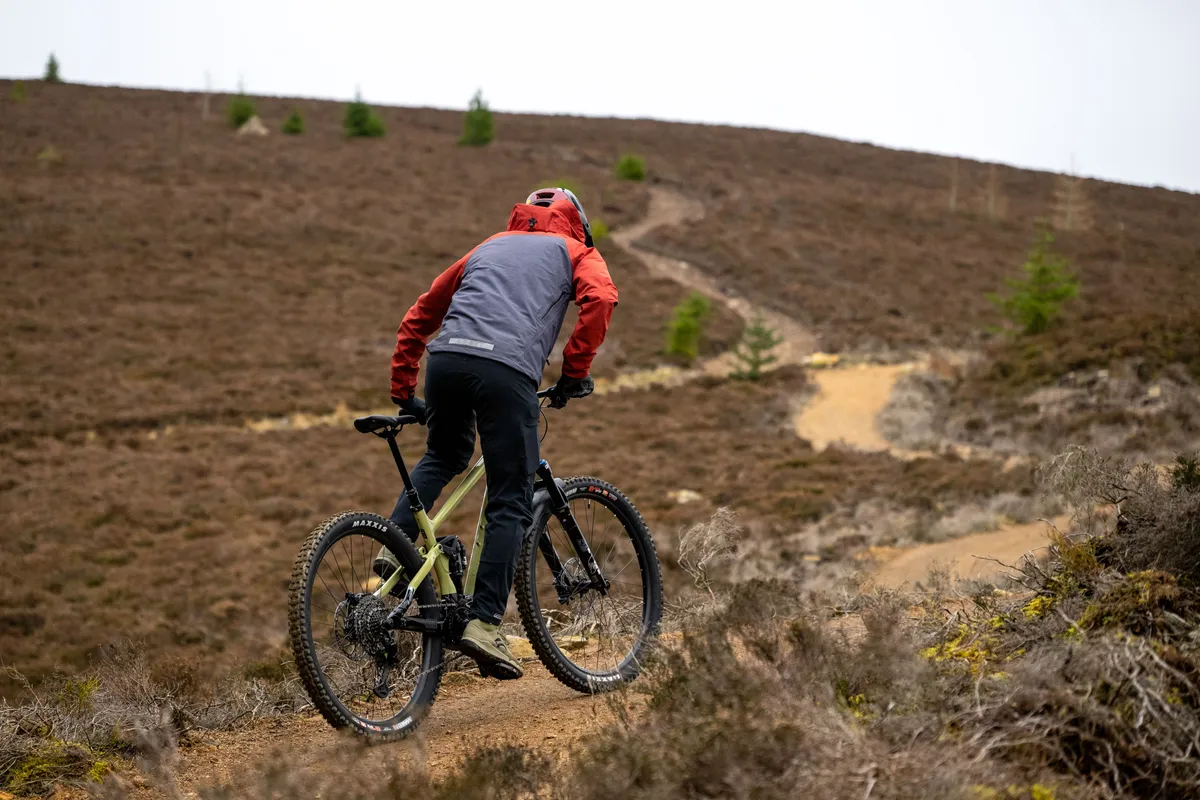
Pointing uphill, the Rift Zone E2 has a marked calmness with plenty of stability.
Thanks to its relatively long 440mm chainstays and steep seat tube angle, your weight is placed centrally over the bike, helping reduce the need to shift forward on the saddle to keep the front wheel from lifting on steep sections.
Its seat tube angle also lines your hips up directly above the bottom bracket, helping improve comfort and pedalling efficiency.
This makes tackling steep sections of trail much easier – its inherent balance means fewer weight shifts are needed to maintain traction and hold forward momentum.
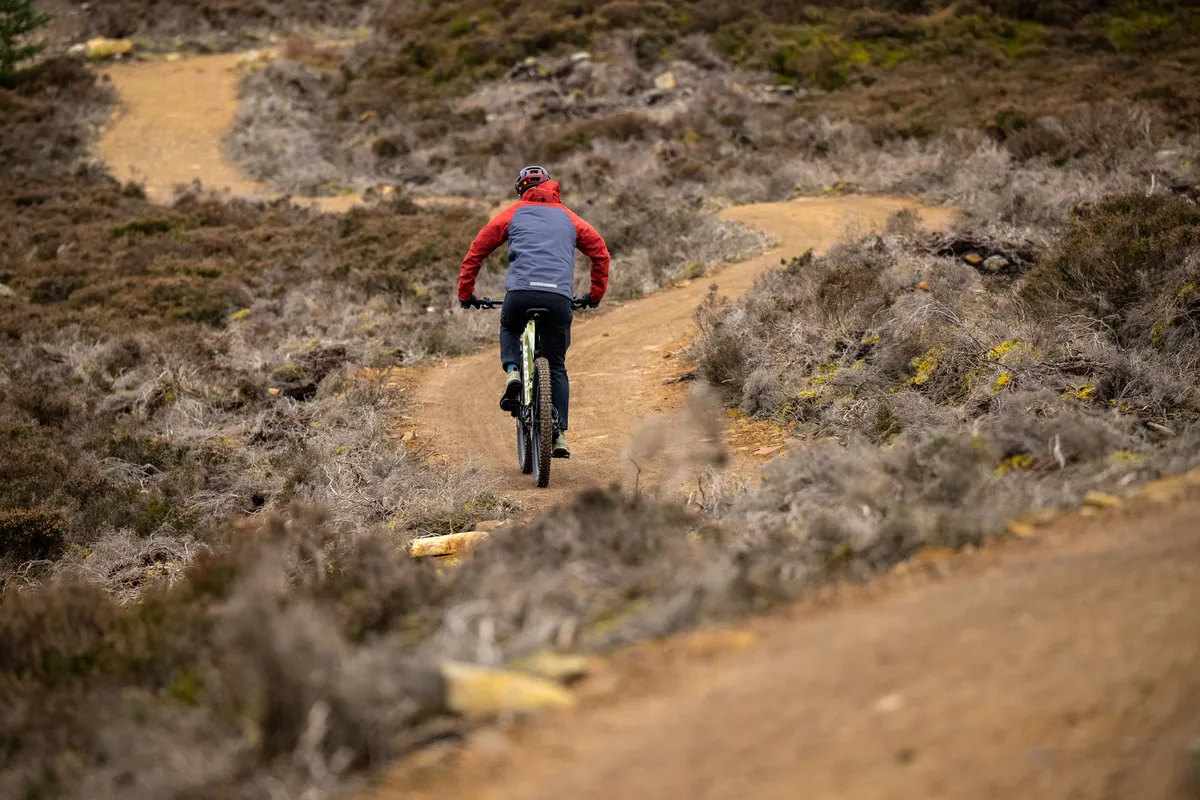
The rear suspension’s supple action enhances this control and composure. The rear shock flutters in and out of its beginning stroke, absorbing high-frequency, low-amplitude bumps found on worn trail centre surfaces or doubletrack climbs.
This adds grip, where the rear wheel feels as if it is glued to the trail’s surface as it tracks its contours.
Progression builds deeper into the travel.
This helps maintain the bike’s geometry as gradients increase, resisting the compressive effects of your weight as it's transferred onto the back wheel. By preserving the seat tube angle, control is easier to maintain.
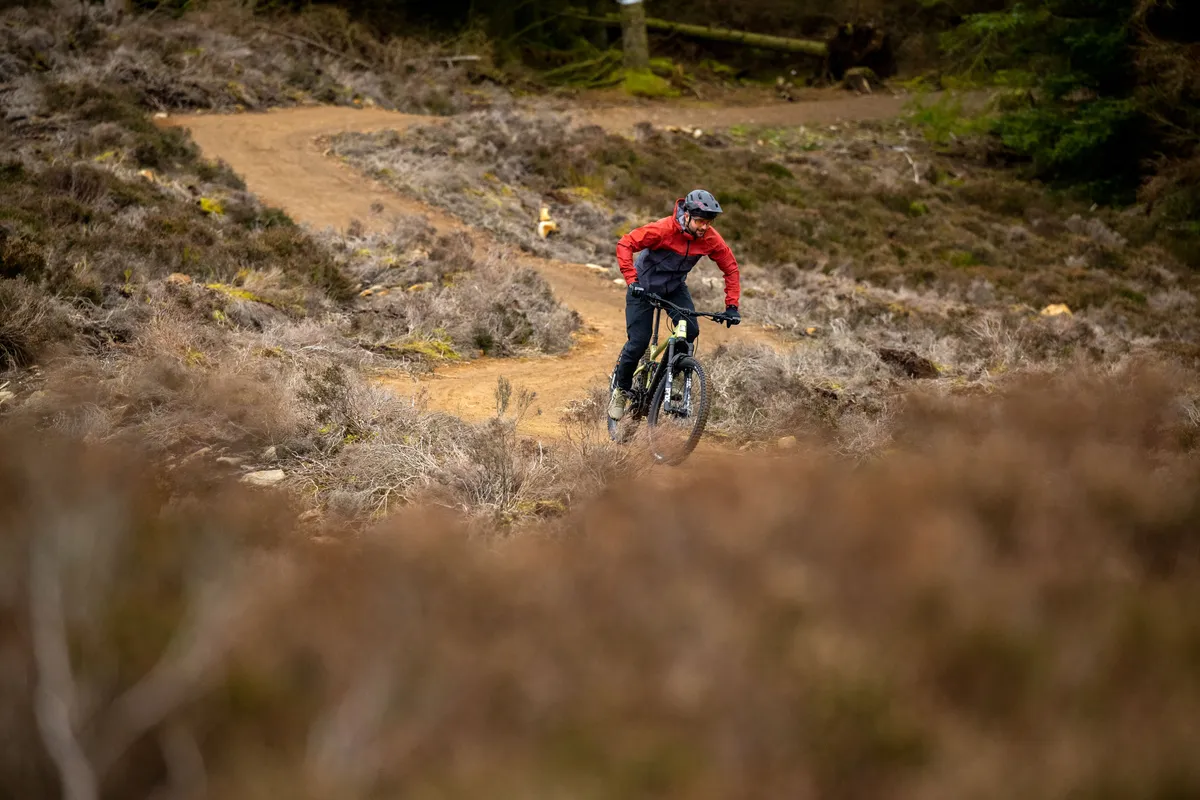
It also helps insulate you from bigger square-edged rocks and roots, or wheel-length compressions, keeping the bike’s chassis level with the trail.
By gradually increasing the forces needed to compress the suspension, bumps are absorbed smoothly, and it doesn’t blow through its travel too easily.
All-in, the Rift Zone has a decidedly enduro bike-like feel to its seated riding position.
Rider weight is spread evenly between the bars and saddle, and it encourages a more upright, rather than shoulders-to-bars, stance. This isn’t a bad thing, however.
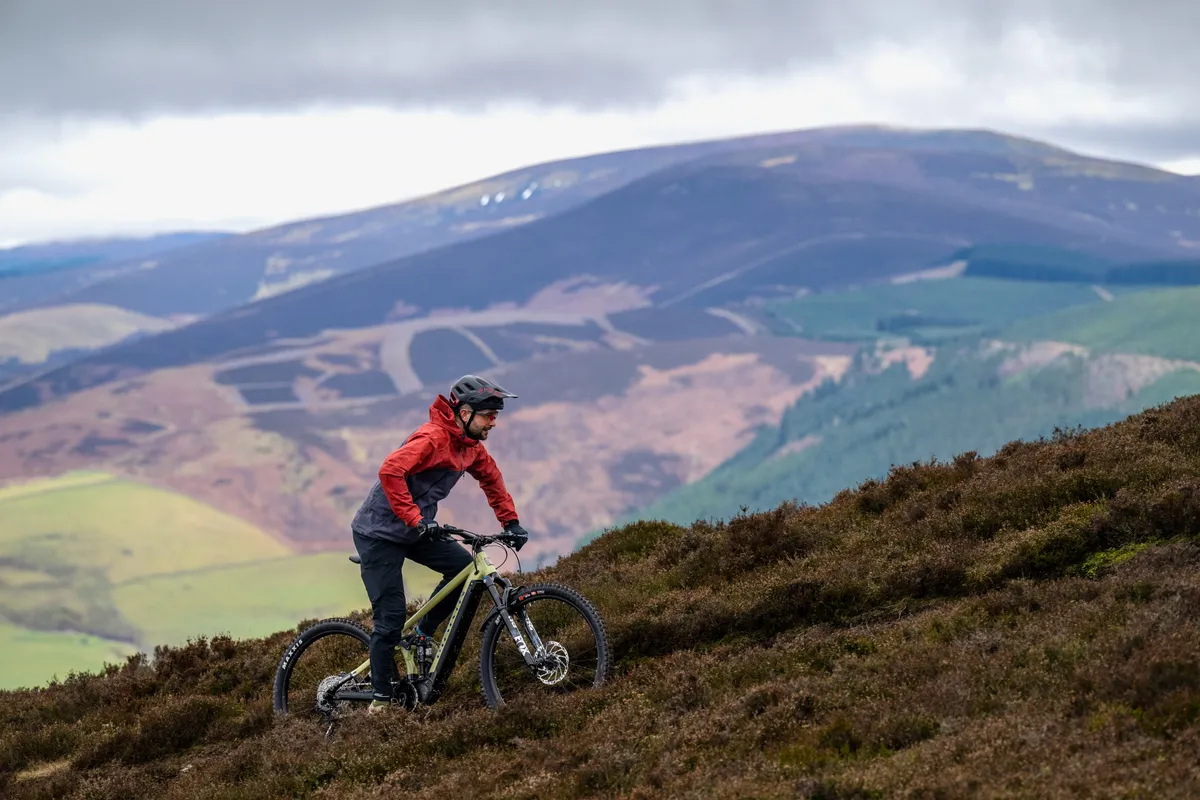
This is particularly comfortable on long days in the saddle. Not having to support most of your weight through your shoulders and arms helps preserve energy and means you can keep riding for longer.
Shimano’s Linkglide drivetrain shifts smoothly and precisely on power, just as claimed. However, the mechanical operation means if you change gear just after a shift ramp, some noise is emitted as the chain waits to move to the next sprocket.

The 38t chainring is limiting, however. I frequently rode in one or two cassette sprockets lower than I would on the same terrain with a bike that has a smaller chainring.
For example, where I would usually be in the third or fourth largest sprocket on other ebikes, on the Rift Zone I would be riding in the third or second largest.
On very steep climbs, once I’d selected the largest 50t cassette sprocket, more rider effort was needed to maintain the cadences required to keep the motor in its sweet spot.
Changing to a smaller chainring, which is relatively inexpensive, would be a worthwhile post-purchase upgrade to improve its ascending capabilities.
Motor performance and battery life
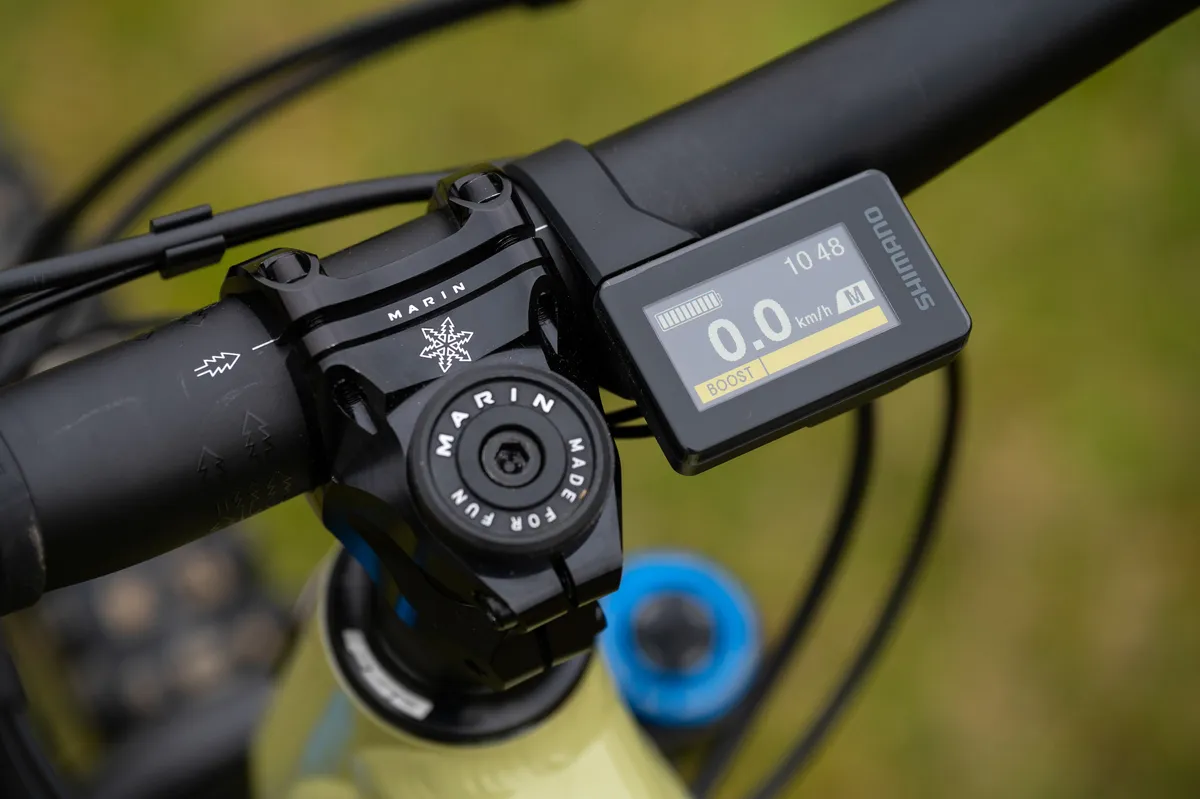
The EP801’s power and feel varies very little from the EP800. Blindfolded, you’d be hard pressed to notice any difference at all, despite Shimano claiming the EP801’s peak power is up by 100W.
Assistance still feels very natural, tapering off the harder or faster you pedal. While not great for fireroad drag races with more powerful motors, the extra human effort required to maintain higher speeds feels rewarding and makes it feel as though you’ve done some decent exercise.
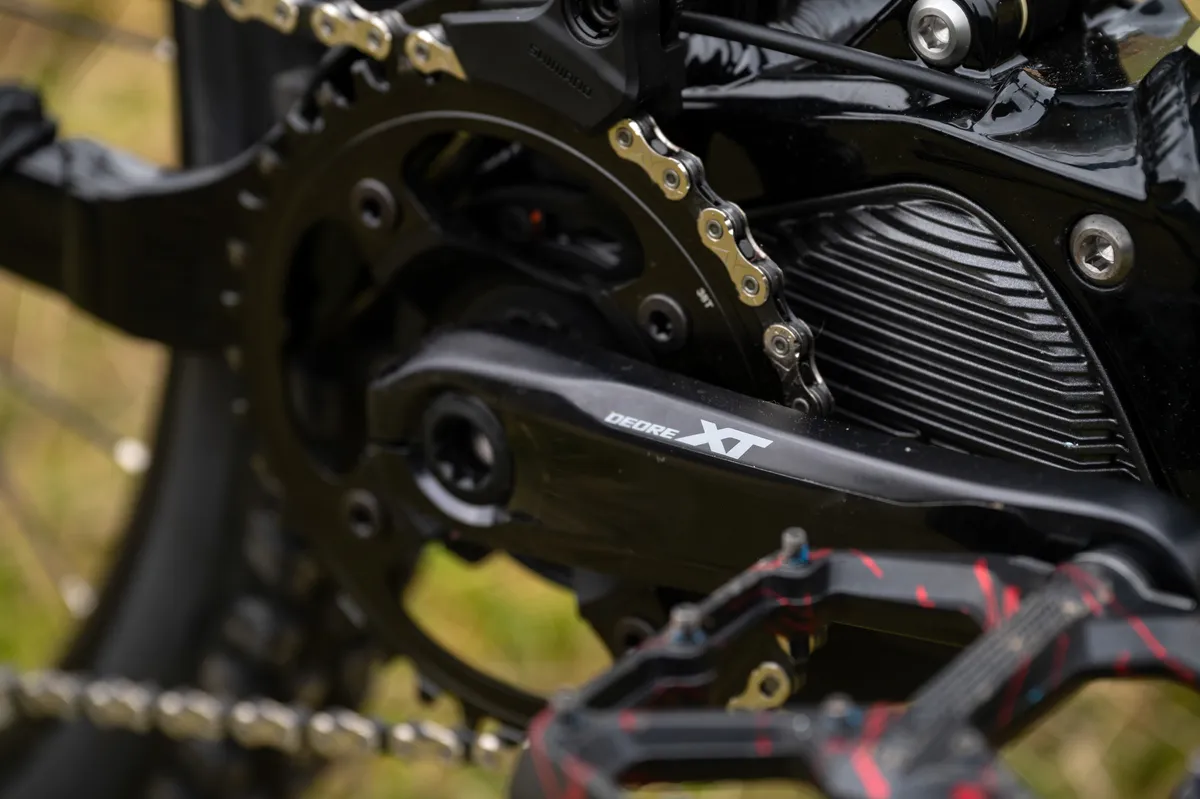
Battery life is virtually inseparable from the EP800, too. I managed to scrape 2,000m of ascent on a single charge using exclusively Eco mode, the same as the EP8.
The biggest difference between the EP800 and this new EP801 is a reduction of freewheel rattle. Shimano motor users will be familiar with the EP800’s noise, which has now been damped and quietened significantly on the 801.
Marin Rift Zone E2 descending performance
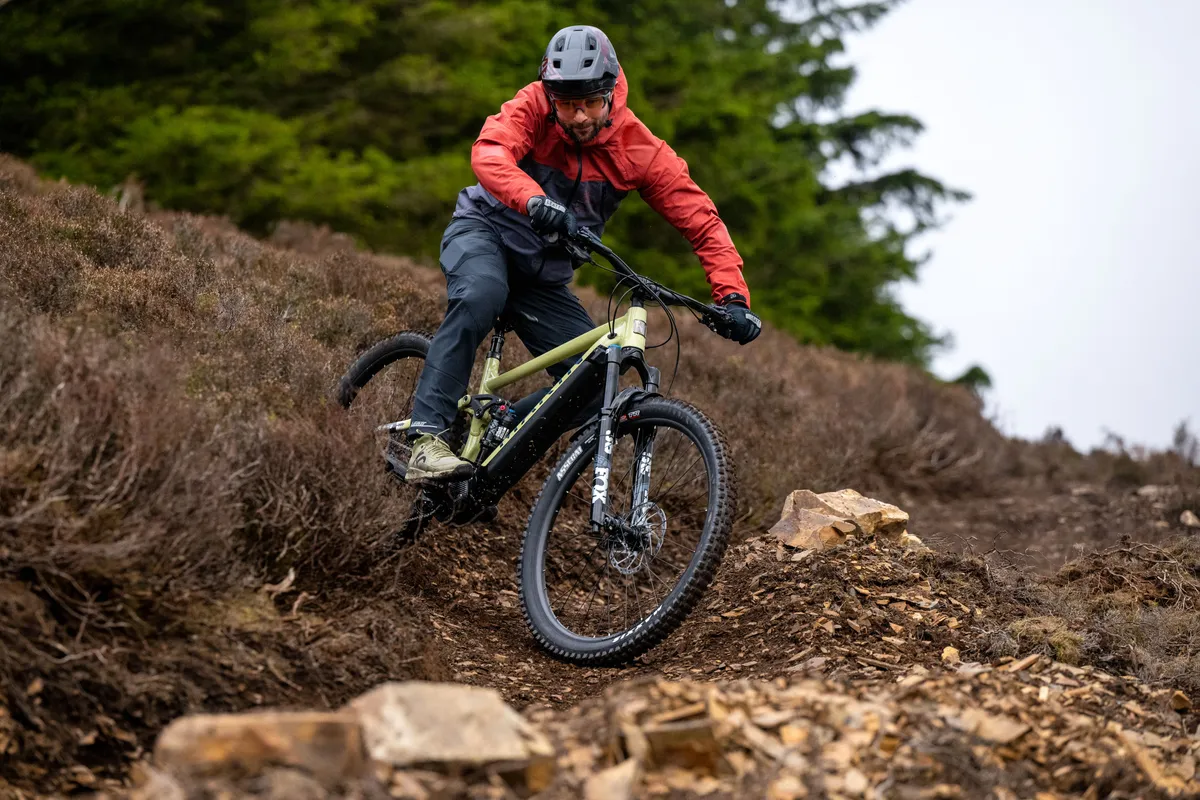
Downhill, the Rift Zone E2 feels like a little bike with a big attitude.
Its supple and supportive suspension and balanced hand-to-feet relationship, along with a well-proportioned rear centre, all create a stable, controlled and predictable platform that can be pushed hard into technical trails.
You feel at one with the bike rather than perched on top of it – its stack and bottom bracket heights combine to create that feeling.
This also means it’s great in the turns.

The bike leans over readily and squats into long, rounded corners confidently without requiring significant rider inputs or weight shifts.
It doesn’t need muscling around to get it to turn, instead lighter but deliberate weight shifts get the best from it.
This doesn’t mean cornering is unstable or fraught; the supportive suspension helps preserve its dynamic geometry when it’s loaded up with rider weight.
In maintaining balance by resisting cornering compression, you can also ride the Rift Zone E2 hard and aggressively.
Smashing into turns is rewarding rather than hectic. Drive it through a corner and it handles impeccably, accelerating around the apex and popping out onto the next section of trail rather than floundering or sapping speed.
In this respect, it hides its 24.23kg weight – about average for a full-power eMTB – well; it pops and leaps down the trail on command, where you only need to load the suspension up to generate that feeling of floaty fun.
However, as soon as you hit more technical sections, you’ll be grateful for the additional mass.
The extra weight means rocks, roots and rough sections have a smaller destabilising effect on the chassis, essentially enabling you to plough through choppy terrain.
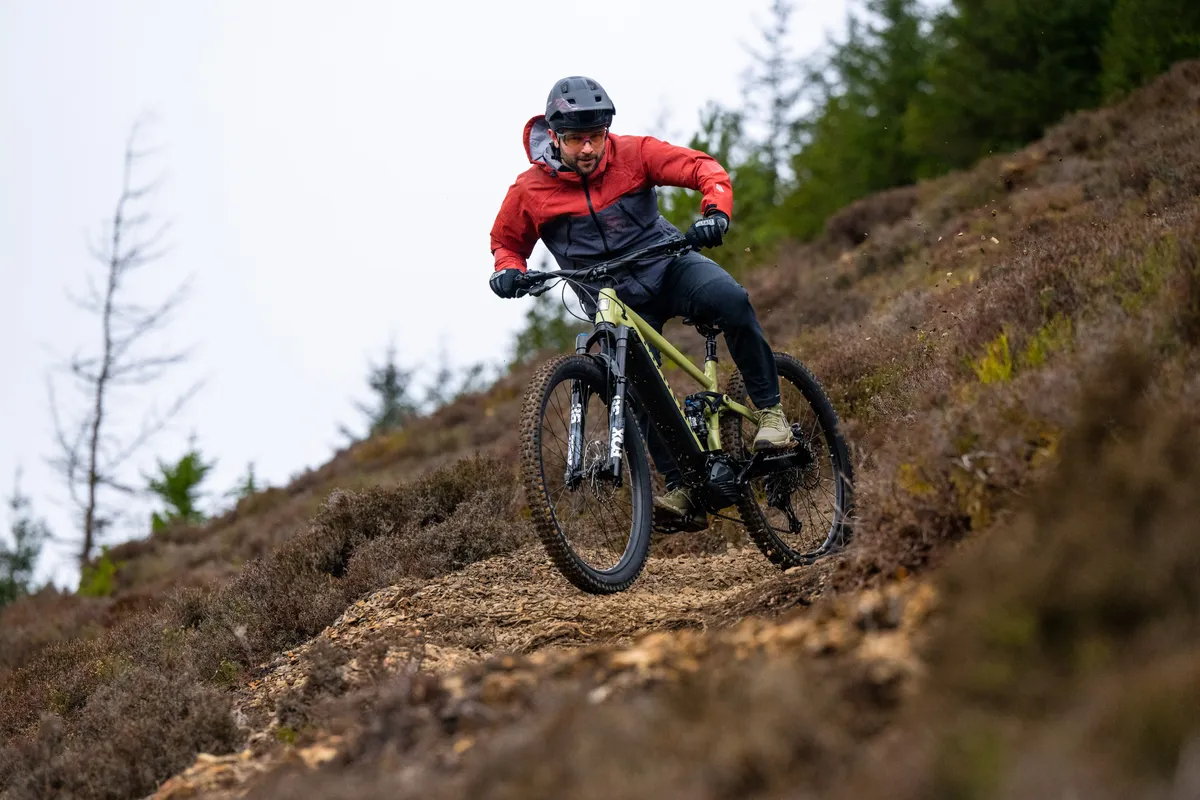
Unsurprisingly, for a bike with just 140mm of travel, it has limits.
Hard landings and big compressions result in bottom-outs. Although there’s no harsh full-stop as all its 140mm of travel is used up, the firming up of the chassis at full travel is perceptible, signifying its performance limits are close.
Its head angle is limiting on steep or fast enduro or downhill trails. But that limit is somewhat blurred, and only when you go past it do you realise you’ve maxed out the bike’s capabilities.
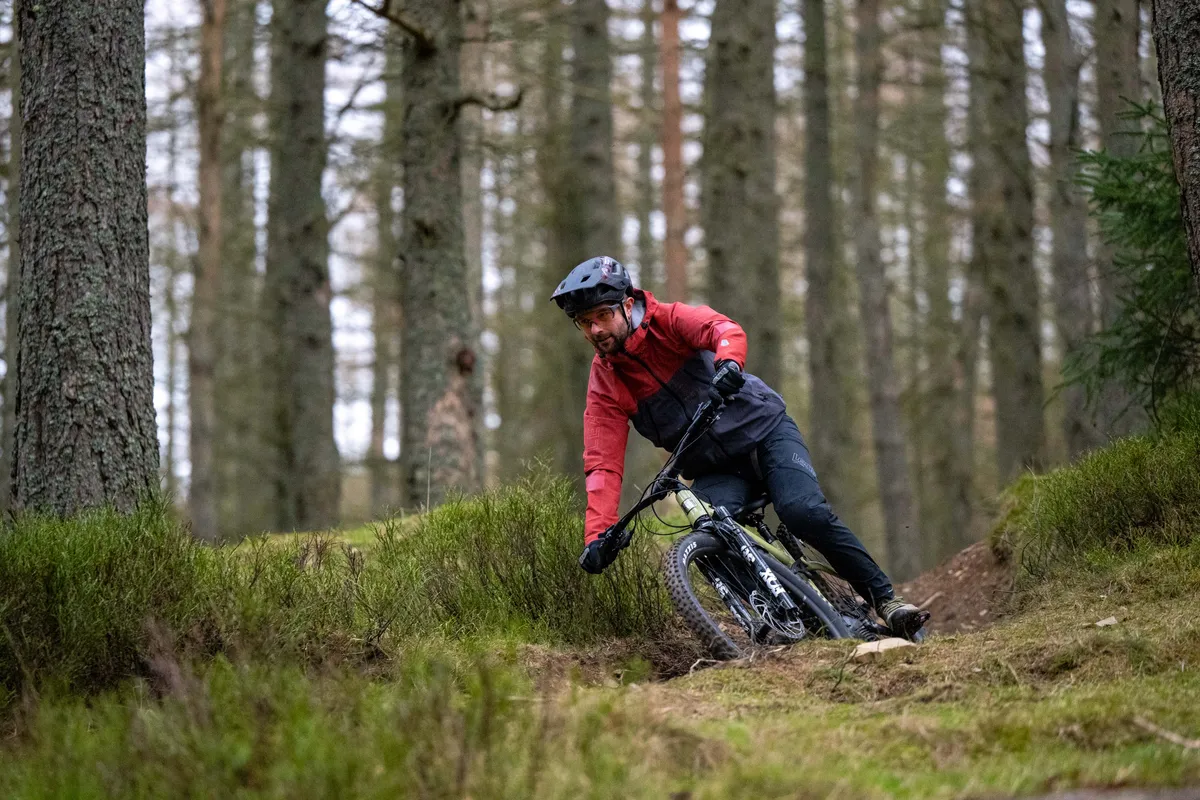
The type of terrain where you find the Rift Zone E2’s limits is perhaps beyond the traditional remit of a trail bike. Riding super-gnarly trails is possible, but doing so requires a little more care compared to a bike with more travel and relaxed geometry.
In that respect, the Marin is impressive and surprising; the depth of its performance despite its relatively short travel is nothing short of commendable.
Marin Rift Zone E2 bottom line
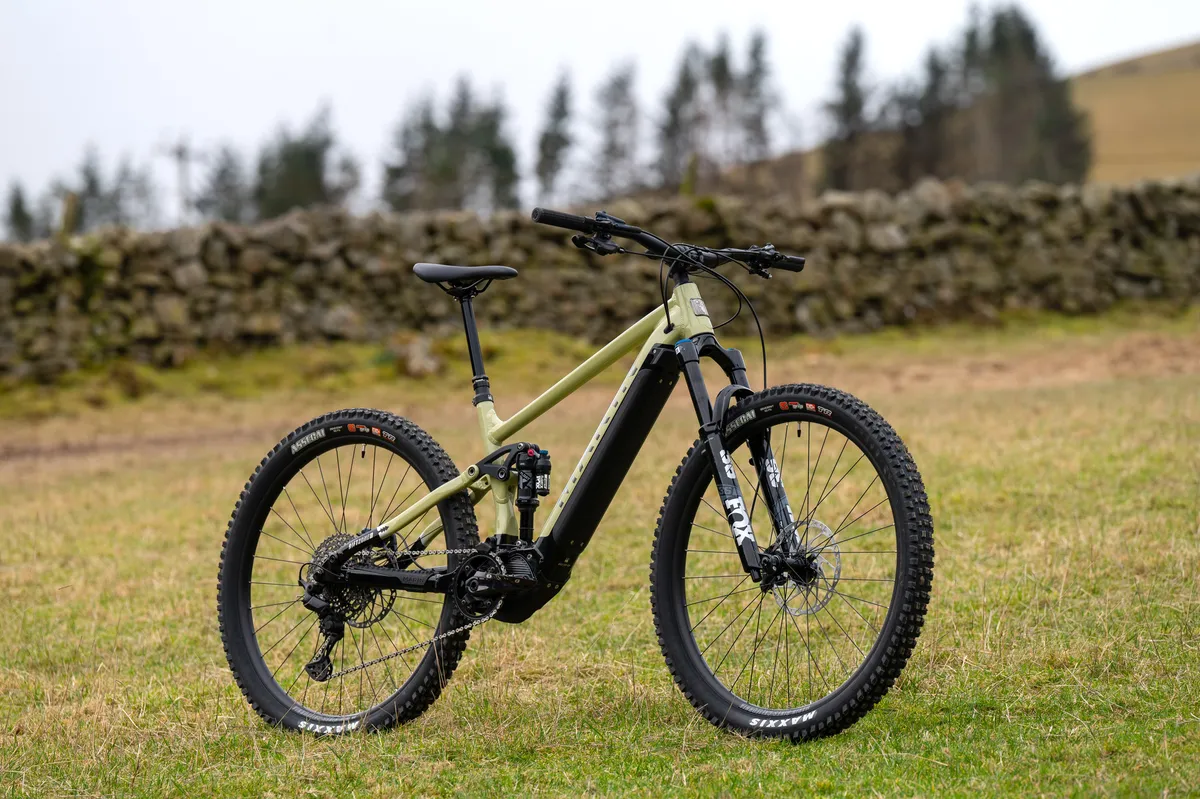
The Rift Zone E2 follows in its pedal-powered sibling’s footsteps, offering a bruiser-like on-trail attitude.
Don’t let its diminutive travel figures fool you; there's plenty of performance in the tank to handle everything from gentle doubletracks to enduro-like descents.
Its sweet spot sits in the middle of that bell curve, however. Plenty of suspension pop and support make it a hoot on flow trails, or less extreme natural ones where it feels much lighter than its headline weight suggests.
Increase trail technicality and its weight works in your favour, generating grip and stability, offering the best of both worlds.

Before riding the Rift Zone E2, I was unsure who it would suit, or where it would excel; the short-travel trail ebike segment seems to lend itself better to lightweight models, but these have their own downfalls.
However, the Rift Zone feels very much like an ebike in nature, and it does so unapologetically; you’re less likely to suffer from the range anxiety or lack of power found on SL ebikes, or the additional battery packs needed to mitigate those issues.
If you spend most of your time at trail centres, riding backcountry all-day epics or just like bombing about in the woods, and want a capable, fun ebike, the Rift Zone will be a great companion.
Product
| Brand | marin |
| Price | 6899.00 EUR,5895.00 GBP,6299.00 USD |
| br_whatWeTested | Marin Rift Zone E2 |
| Weight | 24.2300, KILOGRAM (Large) - Size large, without pedals |
Features
| Fork | Fox 36 Performance Elite |
| br_stem | Marin CNC |
| br_chain | Shimano CN-LG500 |
| br_frame | Series 4 6061 aluminium alloy |
| br_motor | Shimano DU-EP801 |
| Tyres | Maxxis Assegai 3C MaxxGrip EXO+ TR 29x2.5in (f), Maxxis Assegai 3C MaxxGrip EXO+ TR 29x2.5in (r) |
| br_brakes | Shimano SLX M7120 |
| br_cranks | Shimano XT |
| br_saddle | Marin |
| br_wheels | Marin |
| br_headset | FSA |
| br_shifter | Shimano XT M8130 LINKGLIDE |
| br_cassette | Shimano XT M8150 LINKGLIDE CS-LG600-11, 11-50t |
| br_seatpost | TranzX |
| br_gripsTape | Marin Grizzly Lock-On |
| br_handlebar | Marin Trail Bar |
| br_rearShock | Fox Float X Performance Elite |
| br_bottomBracket | Shimano DU-EP801 |
| br_rearDerailleur | Shimano XT M8130 LINKGLIDE |
